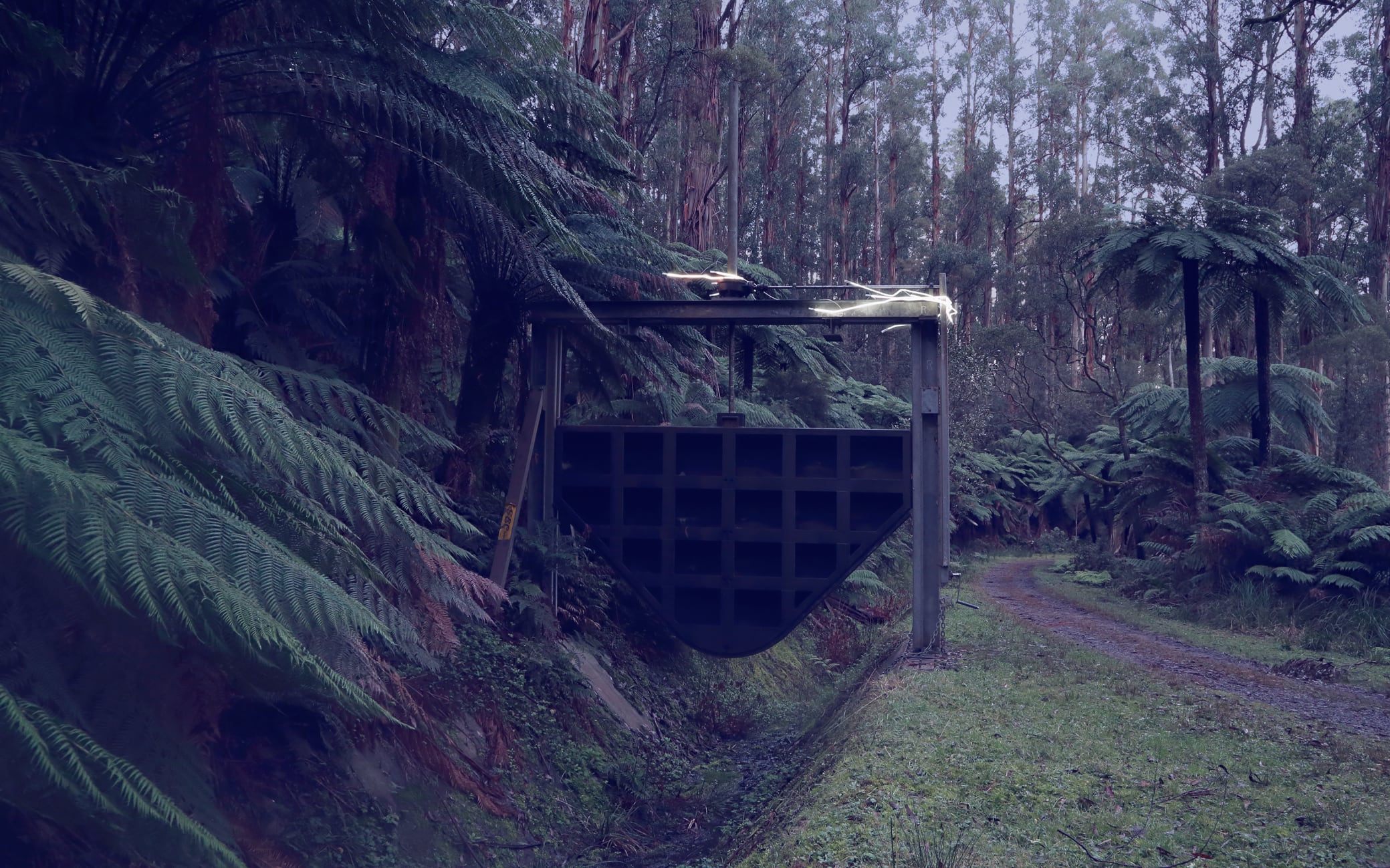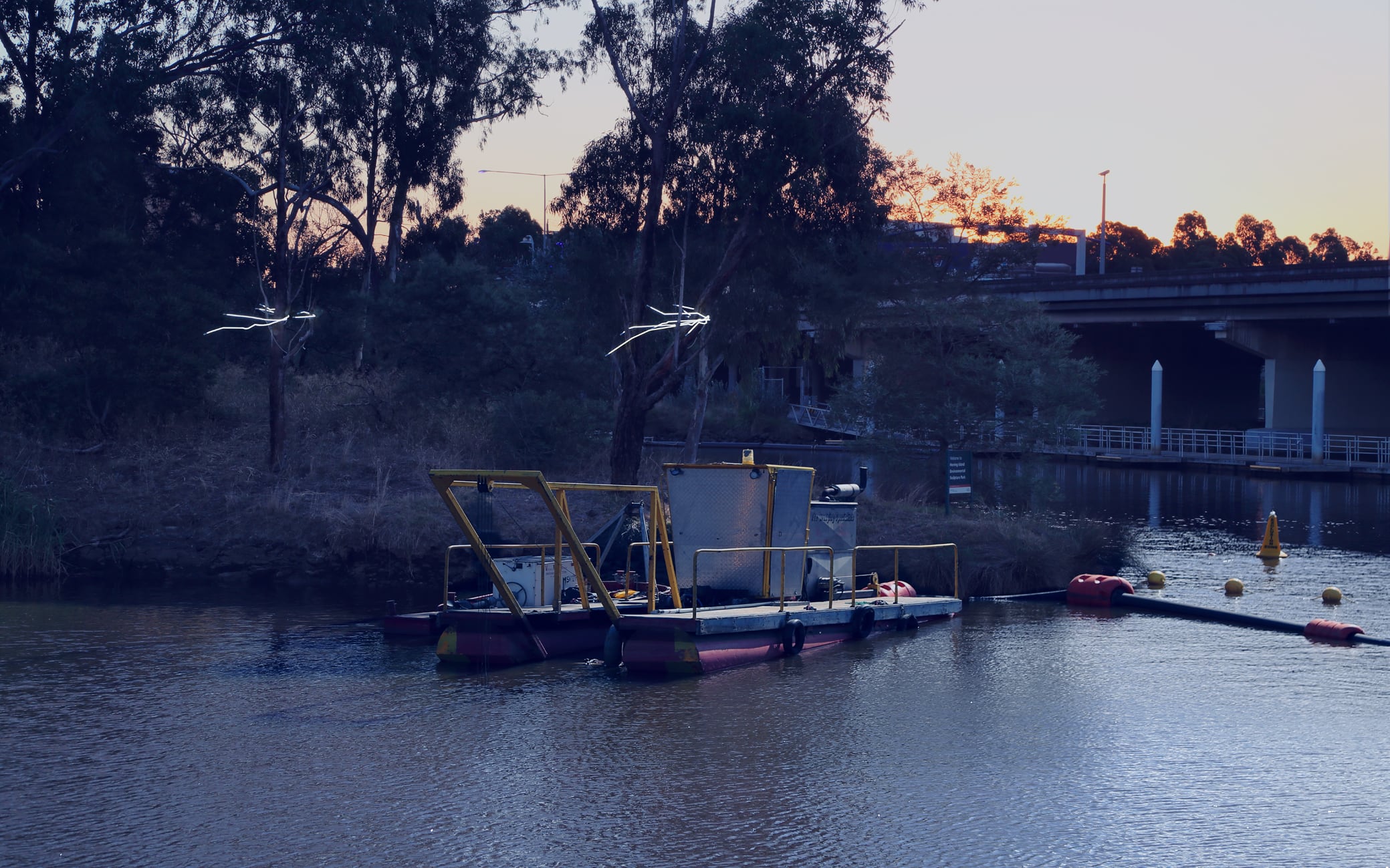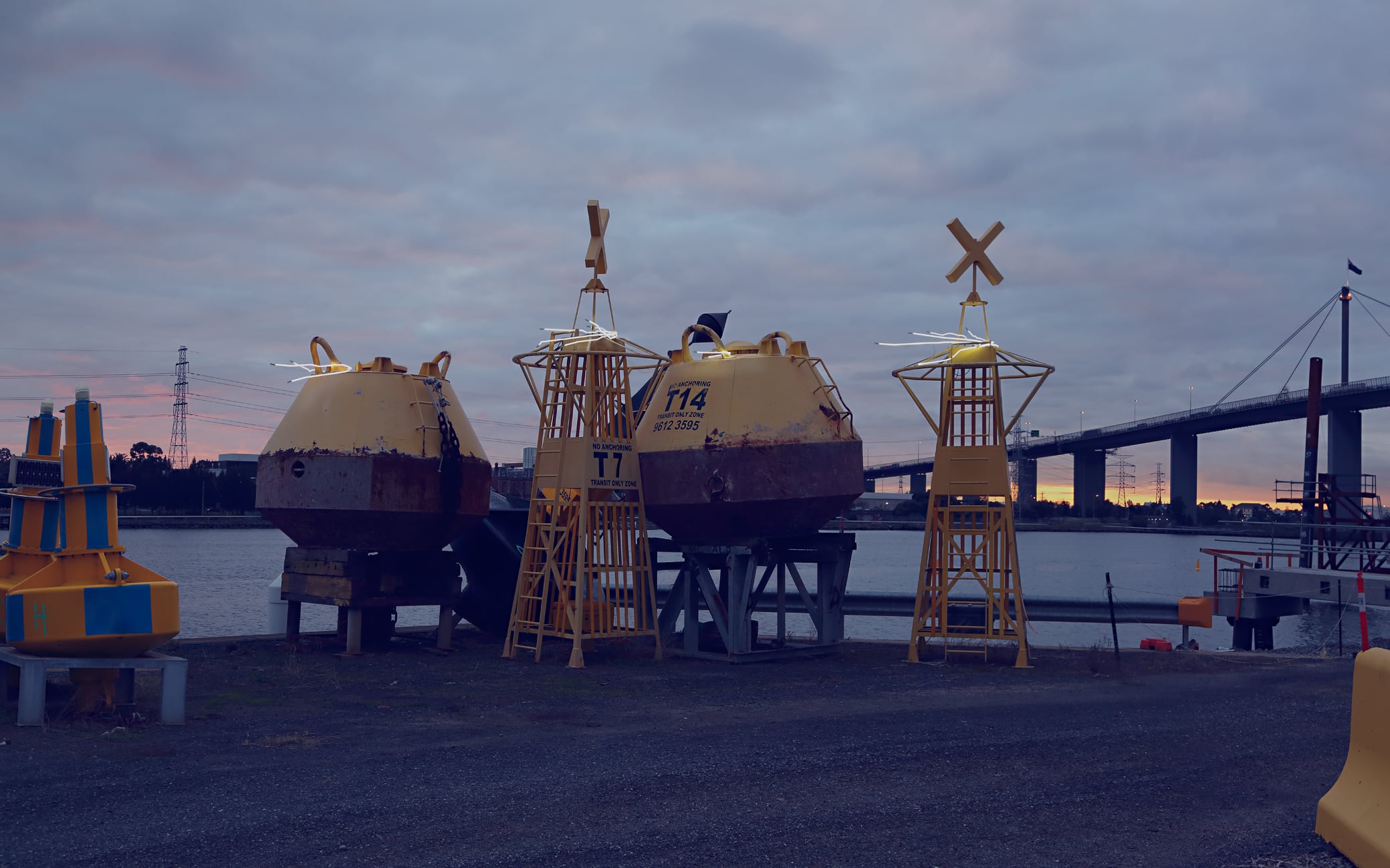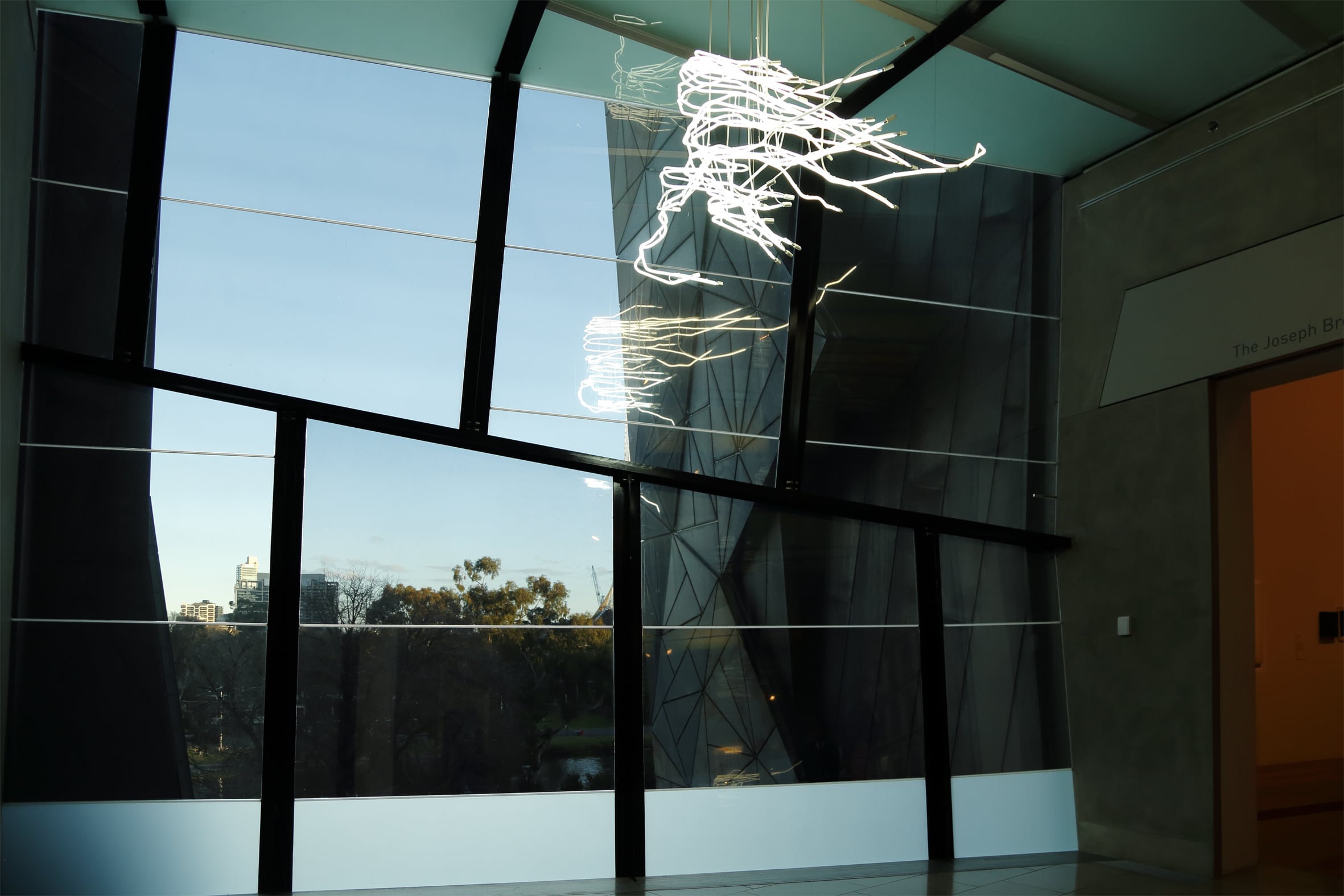



Artist: James Geurts
Curator: Simon Maidment
Floodplain, James Geurts’ recent exhibition at the NGV Australia, continues an ongoing investigation into the unseen impacts that human cultures and the natural environment have had on one another. Via a practice initiated with on-site drawing that expands into historical research, site-specific installations, documentary-based photography and the subversion of other everyday technologies within the landscape, Geurts takes the simple gesture of mark-making to speak for much larger concerns.
Floodplain consists of a series of specific interactions with sites along the floodplain of the 242 kilometre Birrarung (Yarra) River. The artist describes it as a conceptual engagement with places that mark the meeting of ancient river and contemporary metropolis, particularly noting his interest in the psychological aspects of these meetings; where the natural has affected the cultural, and where human desire has, in turn, contained or shaped the existing environment. Sites include aqueducts, bridges, art museums, waterfalls and reservoirs, but all are places where there has been a negotiation between the natural course of the river and human engineering – between water and the built environment.
Geurts mirrors this entanglement on a smaller scale in his work; following a series of drawings made on-site, the artist created installations (first with bendable metal rods and then with solar-powered neon lights) that appear to be drawings in space, flotsam and jetsam caught upon a tree or post or building, delineating a flow of materials at the height of a flood. These temporary, handmade sketches of what might have been offer a gentler engineering than the stone bridges, concrete sluices, steel bridges and solid brick institutions that succeeded following the rerouting of the Birrarung. They hang and curve like the remnants of ghosts, marking the natural expansion and contraction of water that would have been a recurring event prior to European arrival in Australia.
The exhibition in the NGV Australia is a presentation of the photographs that document these installations, although they are not as straightforward as they seem. Captured as the sunlight shifts into twilight, Geurts’ drawings in neon hum against the dusk, at that moment of transition from day into night. Many have been altered, appearing slightly water-stained, waterlogged or even submerged. Alongside these photographs, above the viewers’ head in the gallery space, hangs a single, white-neon work. Created at the Princes Bridge nearby, which is visible from the gallery window, it gives a sense of scale to the photographs, and reinforces the site-specific and material nature of each individual work.
Accompanying Floodplain is a publication that maps the six months of archival and field research that Geurts undertook for the project. The first half of the publication is a visual essay, constructed of archival photographs of the Birrarung that were sourced from the State Library Victoria, Museums Victoria and the Melbourne Water collections. This is a fascinating catalogue of images of places, projects and people; the now unknown photographers of the images offer a glimpse into the impact of past floods, as well as the ambitions of those who attempted to re-shape the river. These images, organised through an intuitive logic rather than a chronological one, map the (recent) human negotiations that precede the site-specific sculptures and photographs of Floodplain itself. As an archive that was created prior to digital photography, they point as much to the culture of their time as to historical events; a relationship to the natural world that determined the shape of, and engagement with, the Birrarung. Annika Kristensen’s essay in the book, Waiting for the flood, presents an important historical background for the project, grounding the sites for Geurts’ photographs in the wider contexts of floods and human engineering, as well as European Australia’s founding institutions and art history. The final section of the book is made up of full-page scans of pencil drawings, processed through a reconfigured scanner as actions on-site. Solar-powered, they record both the unique nature of marks made with the human hand, as well as the unpredictable irruptions of a deconstructed scanning machine. Both become imperfect mechanisms to capture what the eye sees; a contemporary reconsideration of landscape work made en plein air.
At a surface level, particularly in reflecting upon the language Geurts uses in naming and describing his projects (Seismic Field, 2017-18; Fulcrum, 2017; Magnetic Eclipse, 2014), it seems obvious to link his work to the large number of field research-based practices that have emerged in Australia and internationally since the 1990s, specifically those that borrow scientific methodologies and technologies to record and map natural phenomena. While Geurts does engage some of the technologies and terms of reference from this field of practice, his work remains tied to the personal, the psychological, the handmade and the imperfect. The artist’s intuitive mark-making process – alongside solar power units, ‘broken’ machines for photographic reproduction, and existing built environments - is one of the key mechanisms that generates the material of a project, be it a drawing, sculpture, film or photograph. The ephemeral and instinctive sit alongside fact and fiction; the photographic record of a temporary intervention creates a new layer in the shared human archive. An explorer that embraces the temporary nature of his investigation, he also recognises the limitations of any purely scientific approach. Geurts poetically signals the mutually transformative nature of the relationship between humans and the complex world of natural phenomena.
Sophie O'Brien is an arts writer and curator based in Melbourne.
